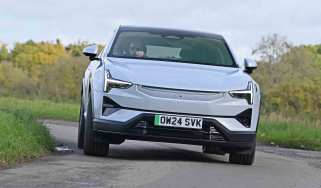Eco driving: tips to extend your electric car range
We joined IAM Roadsmart to pick up some top eco driving tips on how to take your electric car further
With petrol and diesel prices showing little sign of dropping, many drivers are keen to keep an eye on their cars’ fuel gauges and trip computers to eke every last mile out of a gallon. With a little patience and knowhow, it’s not hard to do, either.
But what if you’re driving an electric car or a plug-in hybrid? In that case, every mile really does count, especially if you don’t have a home charger or are entering an area where there are relatively few public points. Should EV hypermilers employ the same practices as those driving combustion-engined cars? To find out, we spent a morning with eco-driving enthusiast Tim Shallcross, head of technical policy at IAM Roadsmart.
Tim’s number-one piece of advice for anyone looking to boost the range of their EV and increase the all-important miles per kWh figure – the closest you’ll get to an equivalent to MPG – is to use the car’s regenerative braking as much as possible. That means looking and thinking ahead to allow the system to recoup as much energy as it can, without relying on the friction brakes.
As a result, our test route with Tim saw us drive a Kia e-Niro in a loop from London’s West End, through to the North Circular in North London and back. During that time, we resorted to using the brake pedal just twice. Instead, we put the Kia’s two energy-recovery settings in their most aggressive modes. One adjusts the regeneration from passively slowing, the other changes the amount of active braking force. This offers a total of six settings – around twice that of some other EVs – which makes the system relatively complex, but allows drivers to set the right mode for the road.
The e-Niro also offers ‘one pedal driving’. To stop, the driver comes off the accelerator and pulls on the left-hand steering wheel paddle, which increases the brake regeneration used to slow, and eventually stop, the car. This takes a little getting used to, and is less seamless than the e-Pedal system in the Nissan Leaf, but it allows you to make full use of the regeneration. Shallcross explained that it’s hard to put a figure on the exact amount of power it’s possible to recoup on the average drive, but a boost of 10 per cent should be possible with care. He also says these techniques can apply equally to a plug-in hybrid, boosting range and saving fuel at the same time.
Shallcross added that because regenerative braking uses the motor to slow the car rather than the brake pads, making full use of it can have a positive impact on local air pollution. While particulate filters help to reduce the amount of particulate matter (PM) from engines, the percentage of PM in the air that’s attributable to brakes, tyres and road dust is actually increasing. As a side benefit, brake pads and discs will last far longer.
Shallcross also champions the use of cruise control whenever possible, although most adaptive systems tend to brake and accelerate quite hard. When traffic starts to get heavier, he favours taking control back and allowing the regenerative brakes to do the work instead.
Getting to grips with this takes practice. We spent a great deal of time figuring out the various settings after reviewing the e-Niro’s inch-thick owner’s manual, although this was certainly worth the effort. In an entirely unscientific test, our route covered a total of 28 miles, but the estimated total range dropped by just 16 miles. While some of that could be accounted for by the driving style of the e-Niro’s previous users, such an increase in the notoriously congested streets of London certainly bodes well.
Another range-boosting tip is to limit your use of the car’s air-con, which is a major power-consumer. As a rule of thumb, you’re better off opening the windows below 40mph and switching to air-con above that, when wind resistance and aerodynamics come into play. We left it switched off until a downpour started to fog the windscreen: as much as we wanted to boost our range, safety trumps everything else.
Much of Shallcross’s advice goes back to basics: plan ahead and anticipate. Even in the unpredictable streets of the capital, this is not only possible but practical – you might even call it relaxing. And increasing your EV’s range could make the difference between you arriving at your destination, or having to make a detour for a quick charge.
Basic tips for improving your electric car range
- 1. The more weight you’re carrying, the more energy you’ll require to move it. EVs come with heavy batteries by default, so try to ditch any excess luggage on board.
- 2. EVs require energy-sapping heaters to warm them on cold days, and air-con to cool them. When it’s hot, opening a window is more efficient at low speed.
- 3. Use cruise control as often as possible. Keeping your car at a constant speed is far more efficient than slowing down and speeding up. Adaptive cruise can be smoother at adjusting your speed in flowing traffic, too.
- 4. Thinking ahead allows you to make full use of regenerative braking. As well as recouping energy, this makes it less likely that you’ll have to accelerate up to speed quickly, too.
- 5. Every car is different, so study your EV’s manual to fully understand the nuances of its various regenerative braking settings.
Would these eco-driving tips help improve your driving? If you enjoyed this feature then why not read some of our others here...
Find a car with the experts







